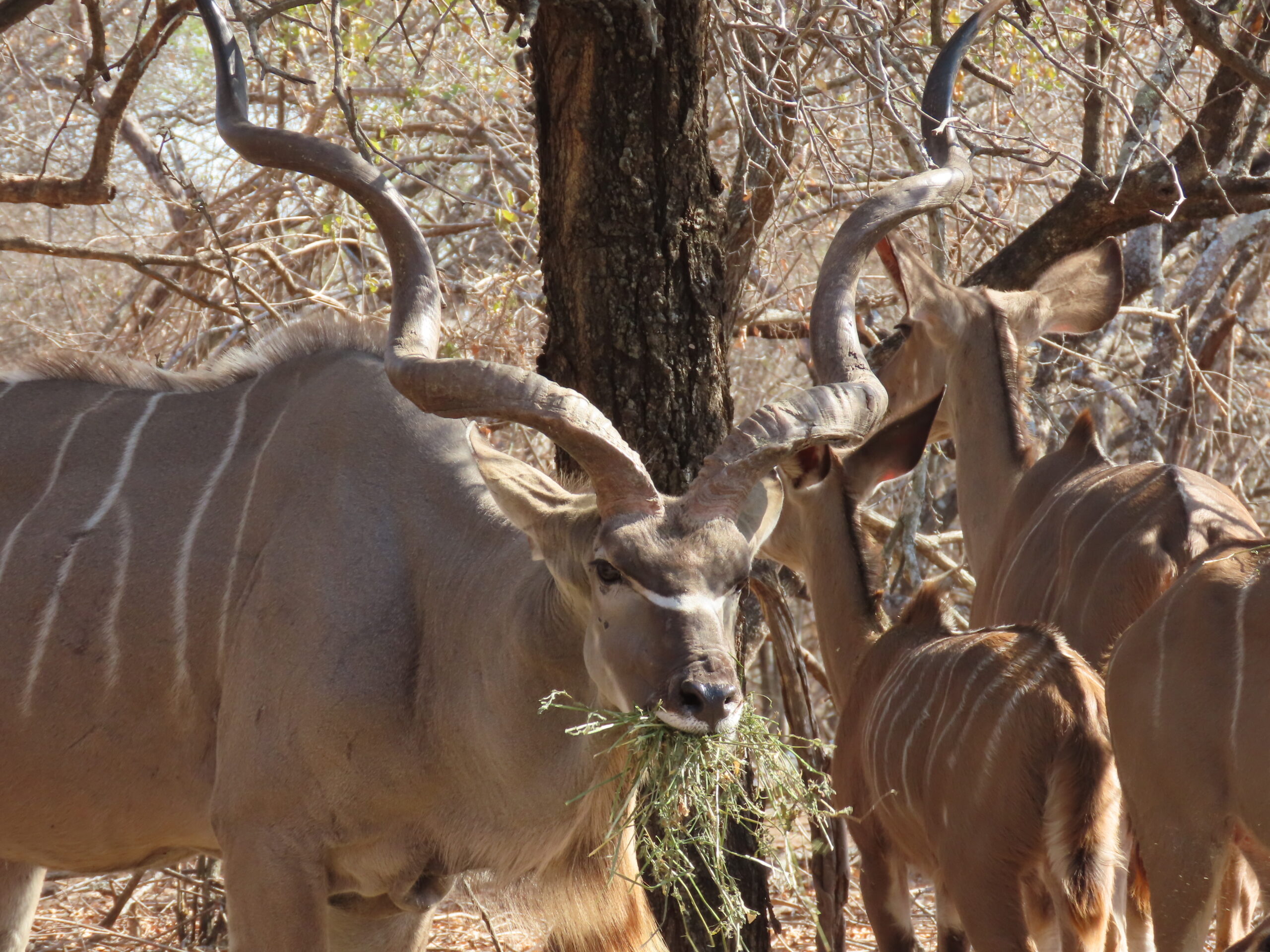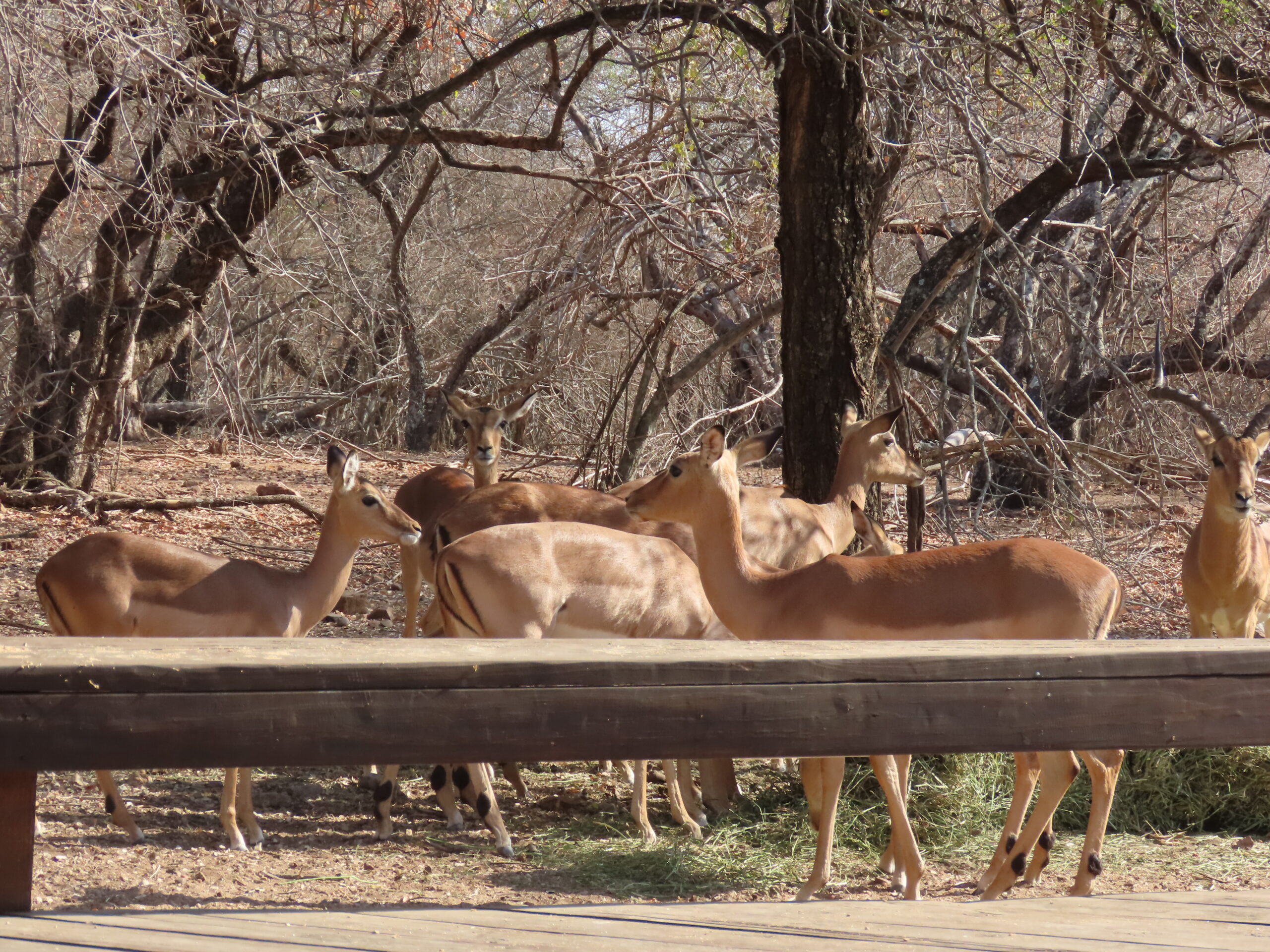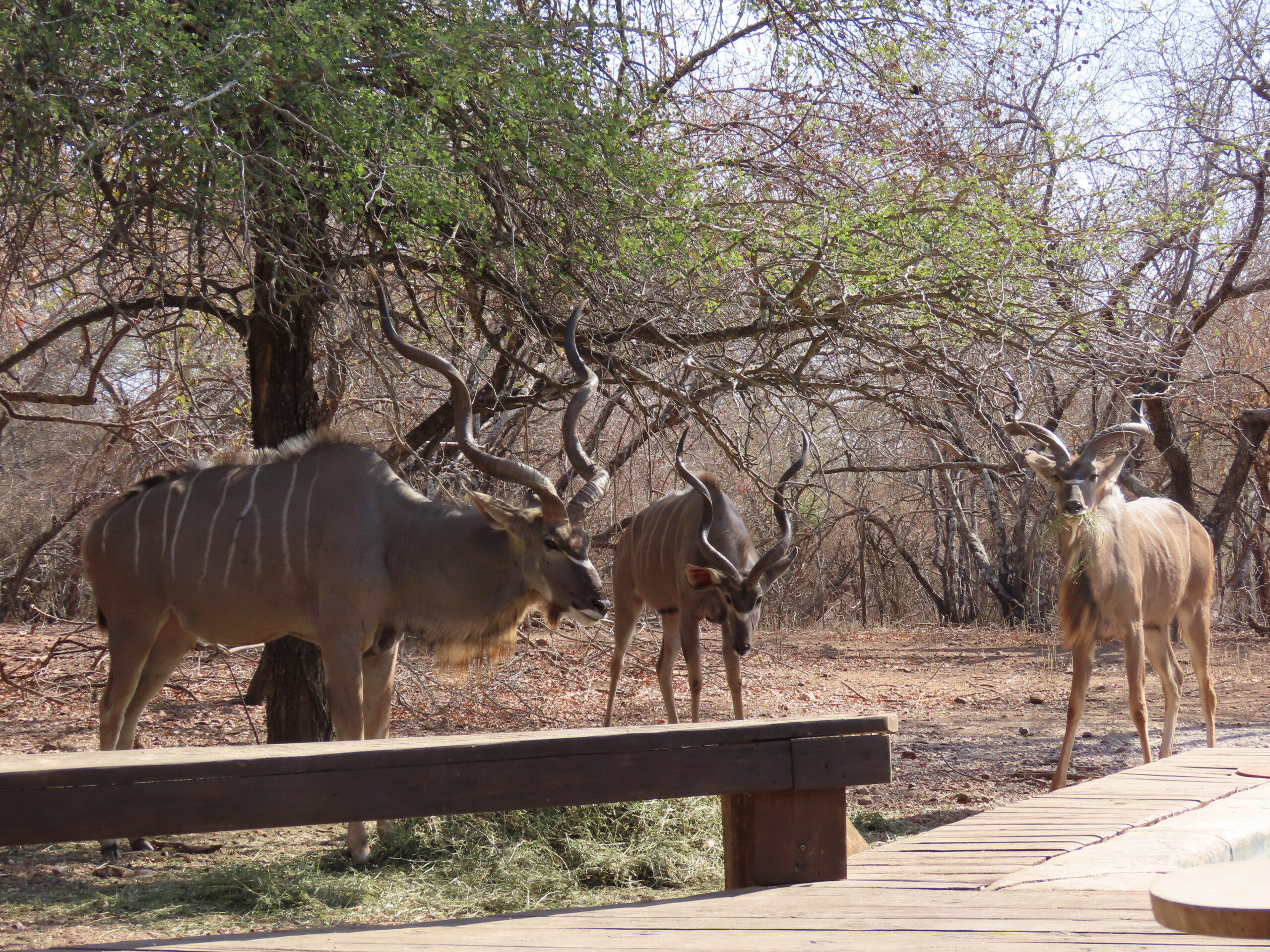
This morning, a bale of lucerne arrived after we’d ordered it yesterday at Daisy’s Den. Only moments after it was laid on the ground by the delivery guy in the usual spot by the tree, impalas surrounded it. They are hungry too. The bush is dry and brown with few natural food sources for the wildlife.
The rains won’t come until fall, when once again the bush will be lush and green with plenty of vegetation for the wild animals to eat. It’s going to be a long winter for them. Although many disapprove of feeding the animals, we, amongst the majority of Marloth Park citizens and visitors, can’t bear to see the animals starve to death.
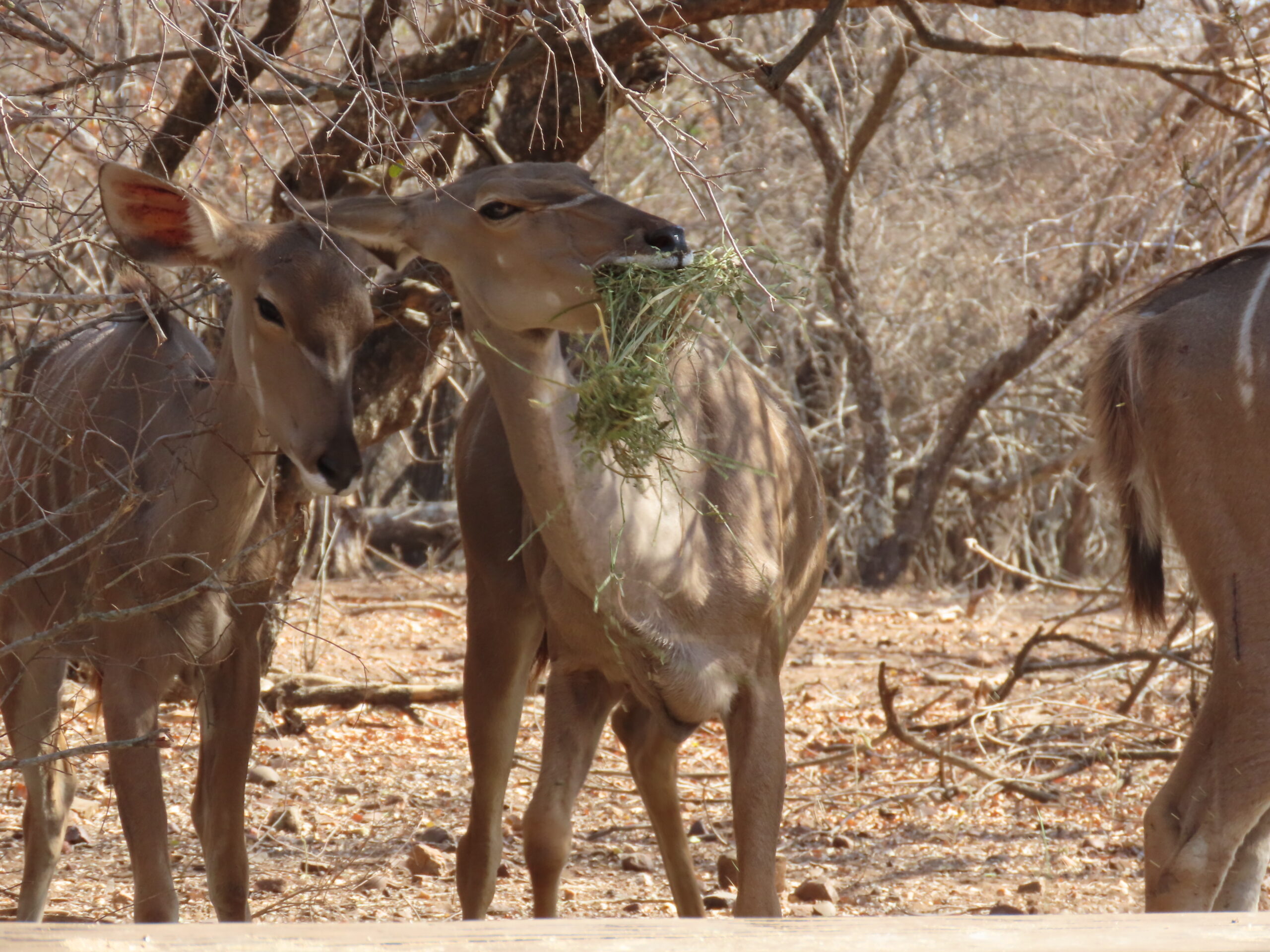
They must only be provided with food that causes no harm to their digestive systems, but pellets, lucerne, and certain fruits and vegetables are acceptable. However, they should not be fed most human foods, such as corn, potato chips, pasta, crackers, bread, and sweets. Consuming such foods can be life-threatening to them.
Impala (Aepyceros melampus) are among the most abundant and iconic antelope species in South Africa, especially in places like Kruger National Park and other game reserves. Their behavior is shaped by their need for survival in an environment filled with predators and seasonal changes in food and water availability. Below is an overview of their typical behaviors:
Social Structure and Grouping
Impalas are highly social animals that typically live in structured groups. There are three main types of impala herds:
-
Breeding Herds: These consist of females and their young, led loosely by one or more adult females.
-
Bachelor Herds: Groups of young or adult males not currently holding a territory or harem.
-
Territorial Males: During the rutting season (typically around March to May), dominant males establish and defend territories, attempting to gather harems of females for mating.
These herds can sometimes contain dozens to over a hundred animals, especially in areas with plentiful resources.
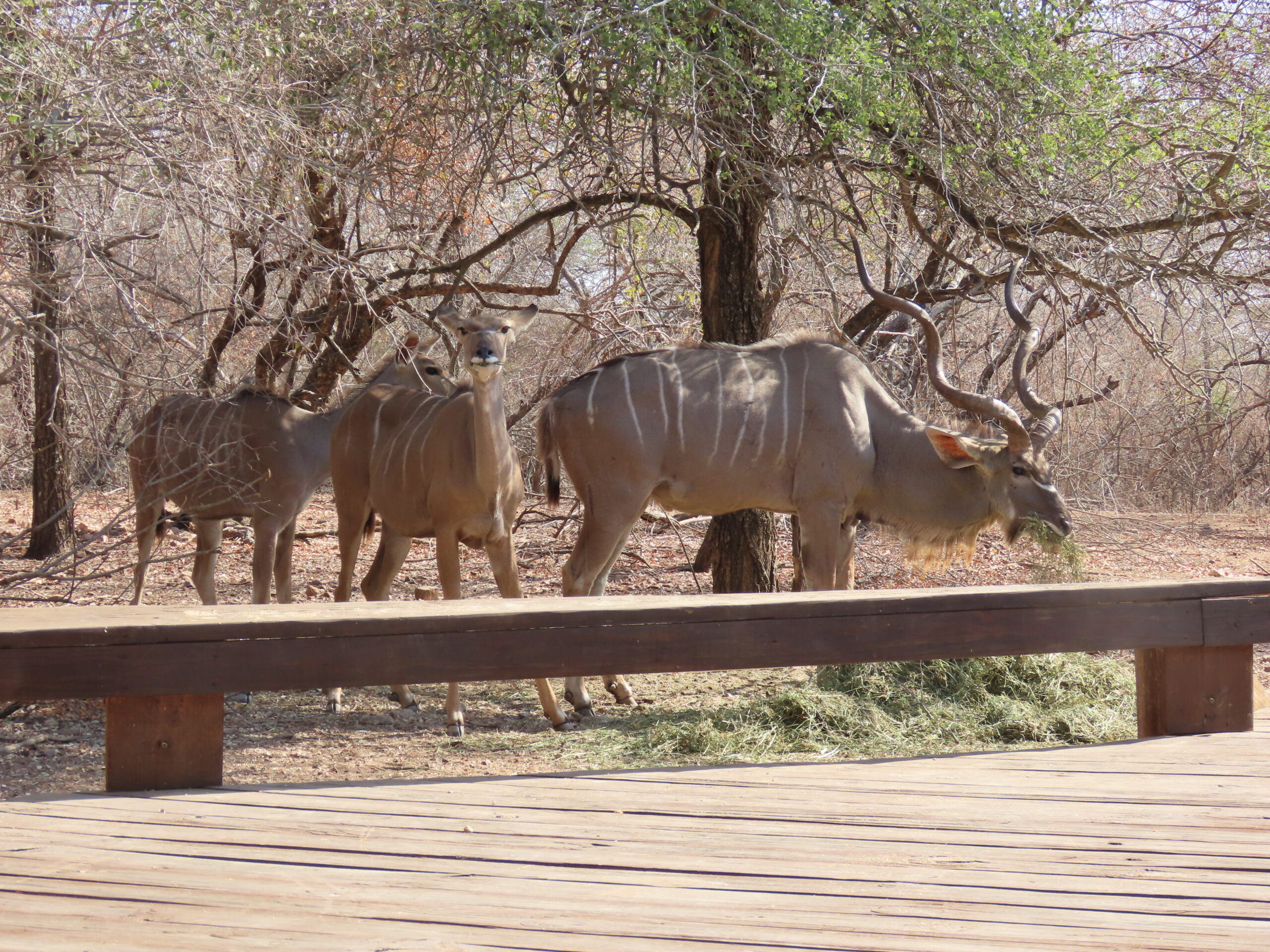
Feeding Behavior
Impalas are mixed feeders, which means they both graze on grass and browse on shrubs, leaves, and fruits, depending on seasonal availability. This dietary flexibility helps them survive year-round in the varied South African landscape.
They are most active in the early morning and late afternoon, spending the heat of the day resting in shade.
Anti-Predator Behavior
Impalas are prey to many large carnivores such as lions, leopards, cheetahs, hyenas, and wild dogs. As such, they have developed keen senses and survival strategies:
-
Alertness: Impalas are constantly vigilant and rely heavily on sight, sound, and smell to detect threats.
-
Stotting or “Pronking”: When startled, they often leap high into the air, sometimes over 3 meters high and 10 meters long. This behavior may confuse predators or signal fitness to discourage pursuit.
-

- Big Daddy was particularly enjoying himself.
Group Safety: Living in large groups helps reduce individual risk, as more eyes and ears are available to detect danger.
Breeding and Mating Behavior
During the rut, dominant males become highly territorial and aggressive. They engage in loud vocalizations (deep grunts and snorts), scent-marking, and head-to-head clashes with rivals. Mating occurs in this period, and females give birth about six to seven months later, typically in November or December.
Female impalas often give birth at roughly the same time, which may overwhelm predators and increase the chances of calf survival—a strategy known as synchronized birthing.
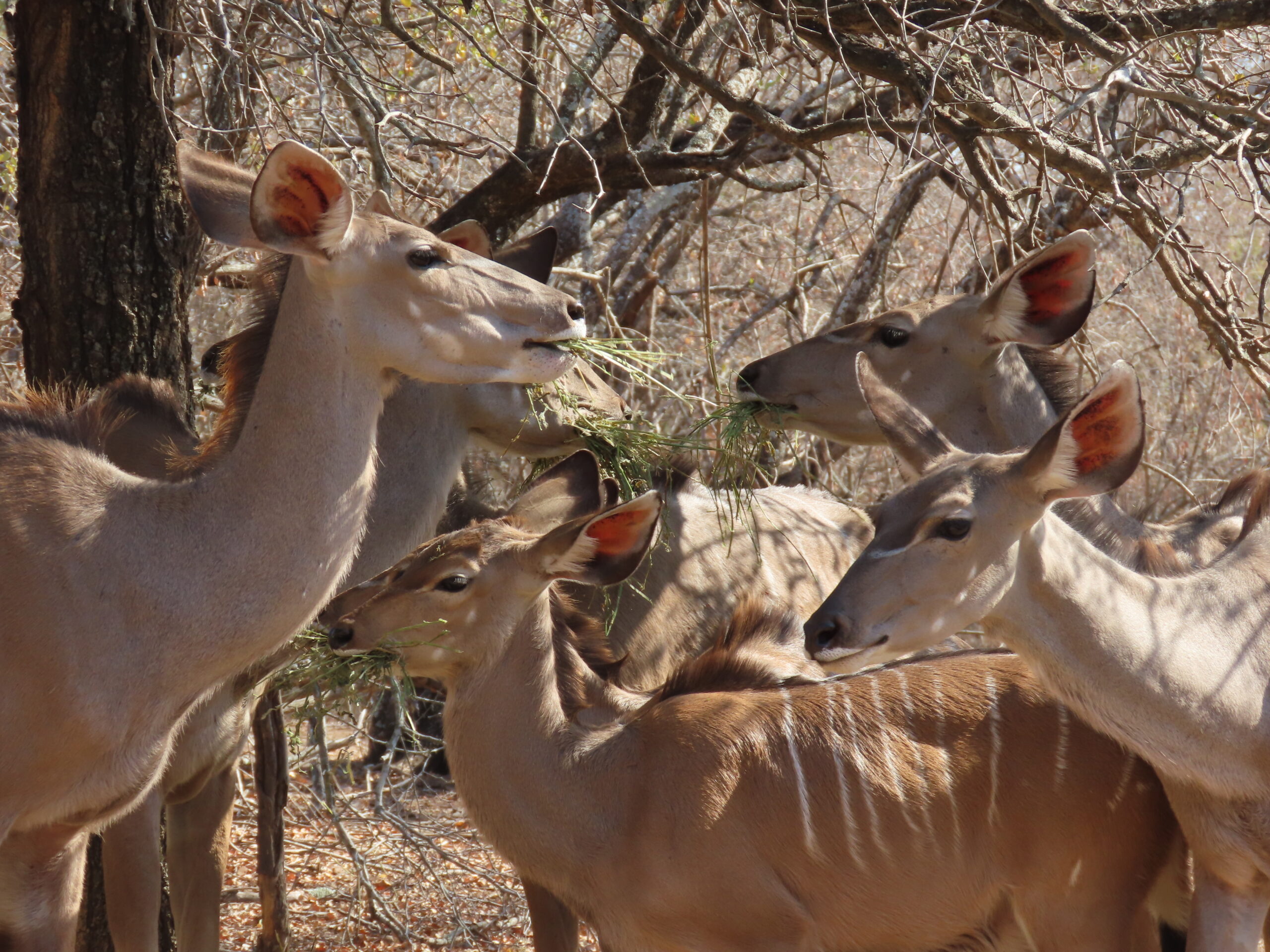
Vocalizations and Communication
Impalas communicate using various vocal sounds, such as:
-
Snorts: To alert others of danger.
-
Grunts and bellows: Used mainly by males during the rut to advertise dominance.
-
Bleating: Calves bleat to call for their mothers.
They also rely on body language—tail-raising, ear flicking, and postures—to convey alarm or social status.
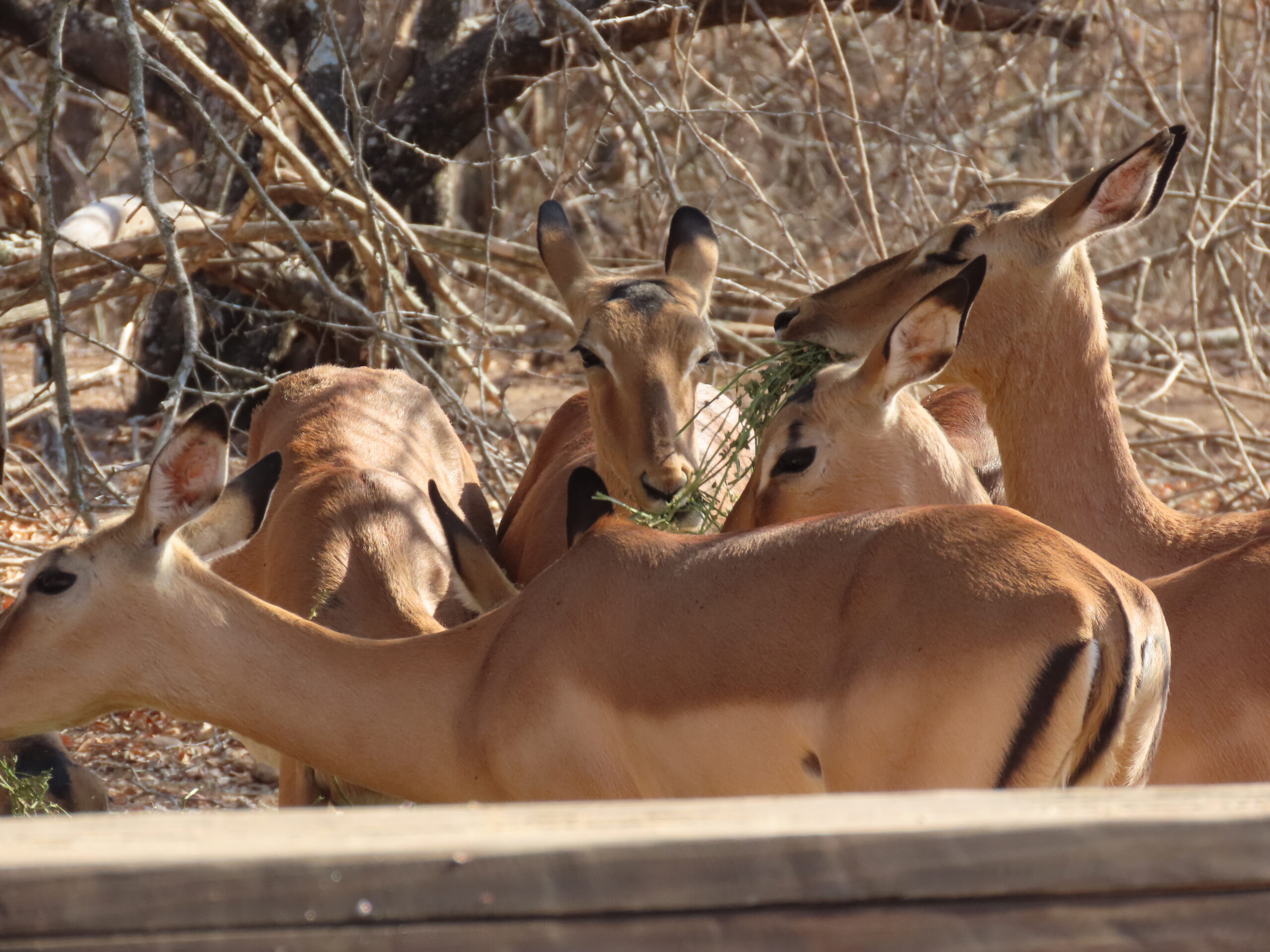
Habitat and Range
In South Africa, impalas thrive in savanna woodlands, especially where there is a mix of open grassland and bush. They require access to water and prefer habitats where they can quickly escape into cover if threatened.
Interesting Behavioral Traits
-
Impalas often associate with other species, such as zebras or wildebeest, which enhances mutual predator detection.
-
During dry seasons, they can survive on less water by switching to more browse-based feeding.
- They groom each other, particularly in bachelor groups, which reinforces social bonds and helps with parasite removal.

The impalas came by and left depending on what other animals stopped by that might pose a threat.
Impalas may seem commonplace on a safari, but their social dynamics, agility, and constant alertness make them one of the most fascinating and adaptive creatures in South Africa’s wild landscapes.
With the new bale of lucerne here today, which is already almost half gone, we’ll be hanging around today and will head out to Jabula around 5:00 pm. There’s another rugby game on the monitors at Jabula tonight, so we won’t be able to sit in the bar, but we’re happy to dine on the veranda like we did last night, having a delicious dinner and lively conversation.
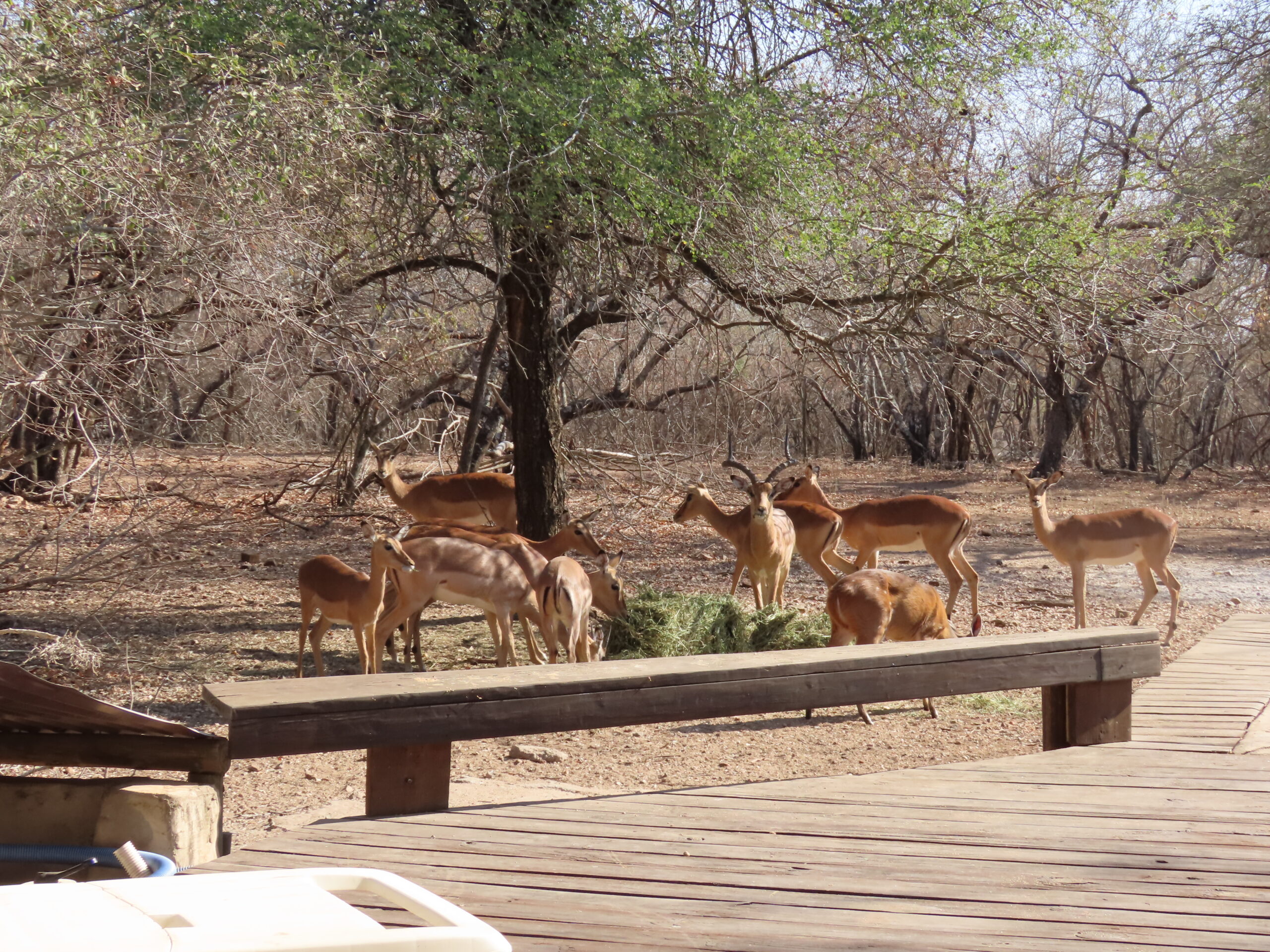
That’s it for today, folks.
Be well.
Photo from ten years ago today, July 12, 2015:


